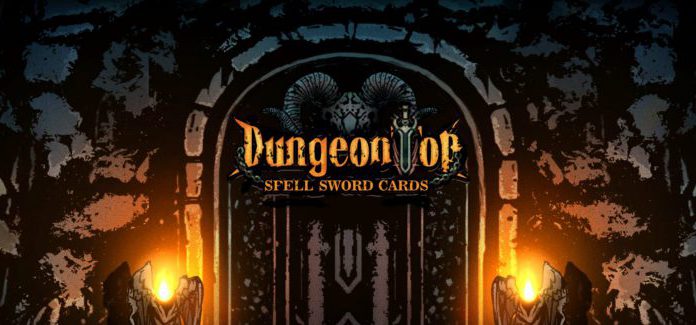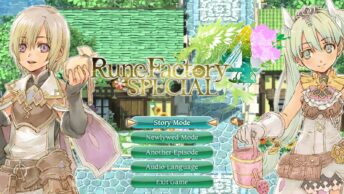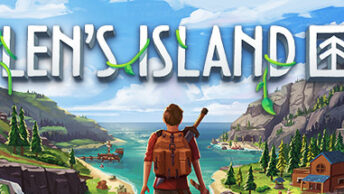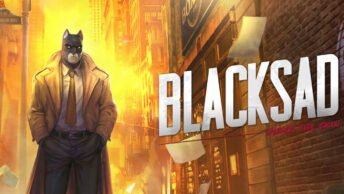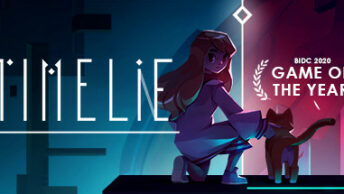Board-game style deck building with hidden depths
Type: Single-player
Genre: Strategy
Developer: One Up Plus
Entertainment
Publisher: Surefire.Games,
CreativeForge Games
Release Date: 16 Jan, 2020

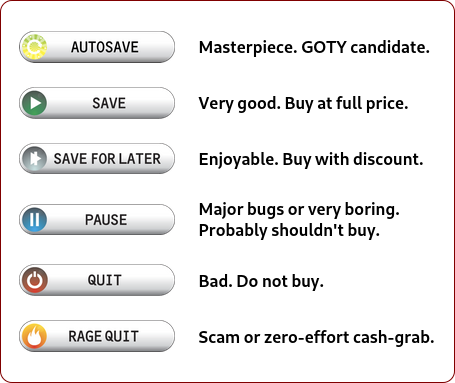
Introduction
The third title in One Up Plus Entertainment’s Spellsword Cards series, after Demontide and Origins, Dungeon Top stays within the series’ Rogue-like deck-building comfort zone to a degree, but steps out and strays into the realm of miniature-style board games, too — though with cards instead of miniatures.
The story may be important to players of the other Spellsword Cards games. Though I’ve seen them on Steam and have them on my wishlist, I’ve not played either of them, so I can’t say for sure. Anyway, according to the brief introductory sequence, it’s been three years since the Steel Curse wiped out most of civilization’s forces and a new threat has appeared: black iron gates in every city, unleashing endless monsters upon the beleaguered populace. It’s your job as one of the heroes of the realm, to venture through the gates into the dungeon, and make your way to its depths to put an end to the source of the monsters.
In other words, it’s pretty much what you’d expect: a good excuse for procedurally generated dungeons populated with bad-ass monsters and occasional bosses along the way.
I’ve been playing a few deck builders lately, some much more addictive and enjoyable than others, so what does DungeonTop bring to the table?
Pick a hero, any hero.
The game begins with a brief tutorial that can be replayed whenever you feel the need. It introduces the basics of gameplay, but isn’t long or detailed enough to get into the nitty gritty, leaving you with the fun task of working out your own approach.
After that, you’re into the game proper. Pick a hero — only the warrior is available to begin, but the mage can be unlocked with gold earned from progression, and it looks like a thief is on the way soon. Then pick an allegiance, which determines the types of cards you will have in your starter deck, and will find in your dungeon run — only two are available in the current version, but it looks like at least three more are on the way. Then, pick a starting deck of 10 cards, of which there are three for each allegiance. These have certain cards that overlap between the other decks in each allegiance, but, even though there aren’t many choices yet, these heavily influence the tactics and style of play available to you at the beginning of the game. There’s no way to edit any of these decks, but that’s pretty common for the genre.
Once you have all that, and you watch a very brief static text and image introductory sequence, it’s straight into the dungeon with you!
Tabletop Gaming
Like most deck-building games, DungeonTop is divided into two discrete modes: the dungeon map and combat. Both of these are styled around a fantasy tabletop board-game aesthetic.
The dungeon map is procedurally generated, with each level being made up of a series of small square rooms connected via hallways. Movement is achieved by clicking on your desired target room to move there, with your current position being indicated by the placement of a portrait of your hero within a room. Populated revealed rooms are shown on the map with similar portraits for creatures that will fight you, or with icons representing non-combat encounters, such as treasure chests, temples, merchants, or a question mark representing pseudo-random encounters.
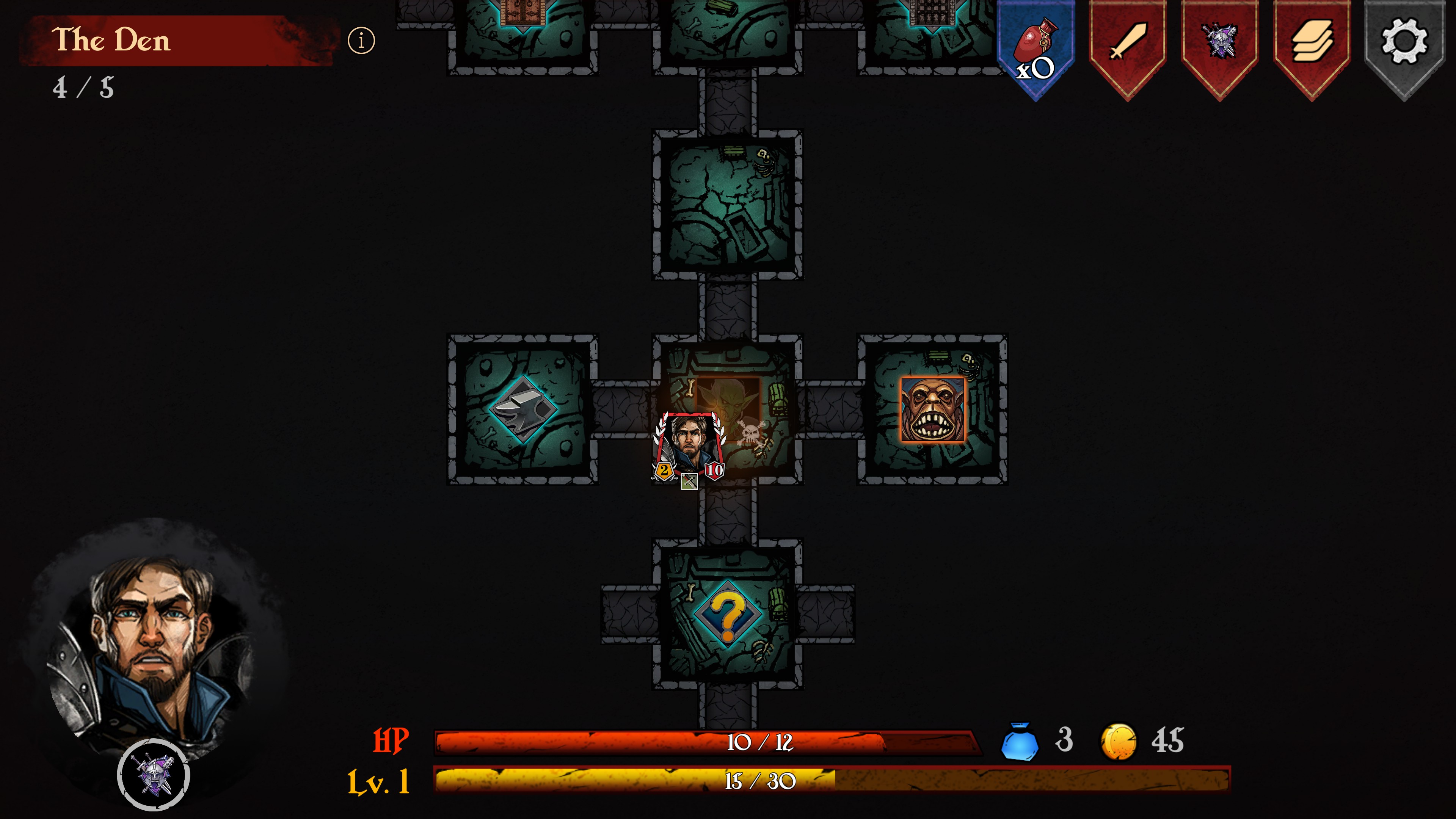
The art in this mode is great, with each level of the dungeon possessing a different look and feel, and the tiles that make up the corridors and rooms connecting together seamlessly. And while this mode is turn-based, in actuality nothing on the map moves or does anything except for the player character.
When encountering a monster you’re able to examine its deck — a welcome addition to the genre that I haven’t seen before — and then either start the combat or try to run away, ignoring the monster completely or coming back later to try your luck once you’re better prepared. Your first evasion on each level is always successful, but subsequent chicken runs become less likely with each attempt. I haven’t actually failed in an escape attempt yet, even when my success chance dropped to 35%, but I’d assume failure results in the combat taking place immediately. If it’s anything like other games in the genre, then perhaps with your enemy moving before you as a penalty for being a chicken. That is, of course, not to say that running away isn’t sometimes a very good idea!
Card Battles
If you choose to battle the beastie, then the game’s combat mode begins. This is purely turn-based and is a sort of miniature-style card-based board game with portraits instead of miniatures.
Each battle takes place on a rectangular board made up of square tiles. The enemy creature starts out somewhere in the top of the board, usually to the left, and your hero starts on the bottom of the board, usually to the right. Occasionally a creature may start with a couple of minions (particularly lizard eggs), and I’ve seen one card that lets you start with a minion on the board, too.
Each turn you draw cards into your hand from your draw deck up to your current mana. Each card is of one of two types: spell or minion. Spells are instantaneous effects, such as increasing power, healing, causing immediate damage, and the like, and typically either affect a designated target or all cards of a certain category. Minions are your companions — human or otherwise — and are dragged into one of the squares surrounding your hero and minions on the board in order to bring them into play. At the beginning of the battle, available squares for summoning minions are only those directly adjacent to your hero, but as you summon more minions, the available squares increase, then decrease again as enemy units impinge upon your part of the board.
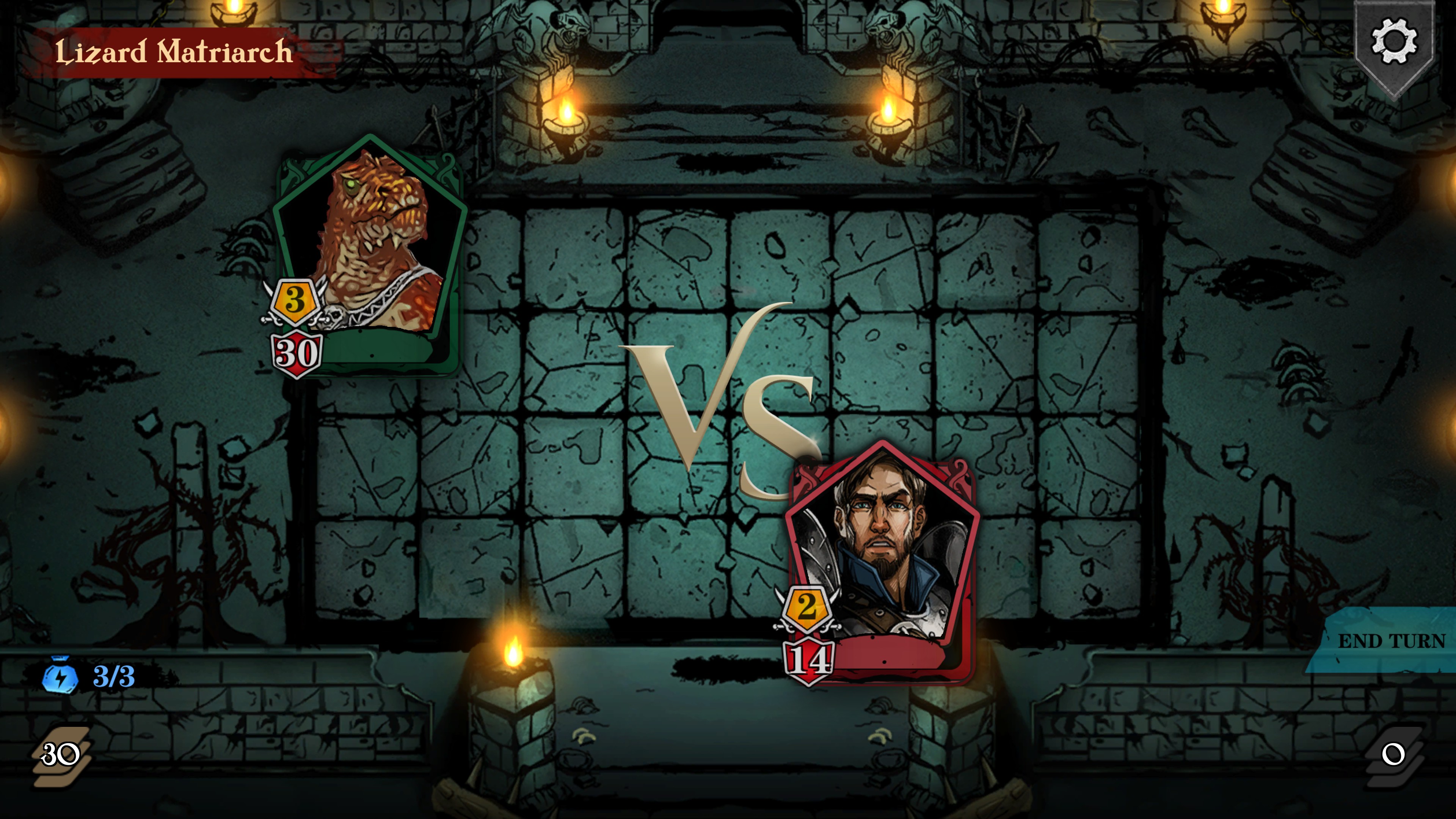
All units — minions and heroes — have only two attributes: power, which determines the damage inflicted on an attack, and hit points (hp), which determine the damage that the unit can take before being destroyed. In typical CCG / deck builder fashion, however, there are a number of effects and abilities that each unit and spell might possess: blocking damage, penetrating damage, ranged attacks, poison or flame attacks, stunning, etc. — the list goes on.
Most of this is relatively standard CCG stuff, but one aspect that’s quite different to other games I’ve played is mana. You see, almost every card — be it spell or minion — costs nothing to play; your mana reserve remains static. But occasionally you’ll encounter a card that costs a mana point. After casting such a card, which is typically more powerful or adds some special ability, your mana pool will deplete, and in subsequent turns you’ll actually draw one less card than usual, since your draw phase is determined by your mana. It’s not hard to regain mana; it happens automatically at times, or can be forced through discarding a card at the end of your turn, rather than playing everything in your hand. But it does add a different way of thinking about card battles, which is quite refreshing.
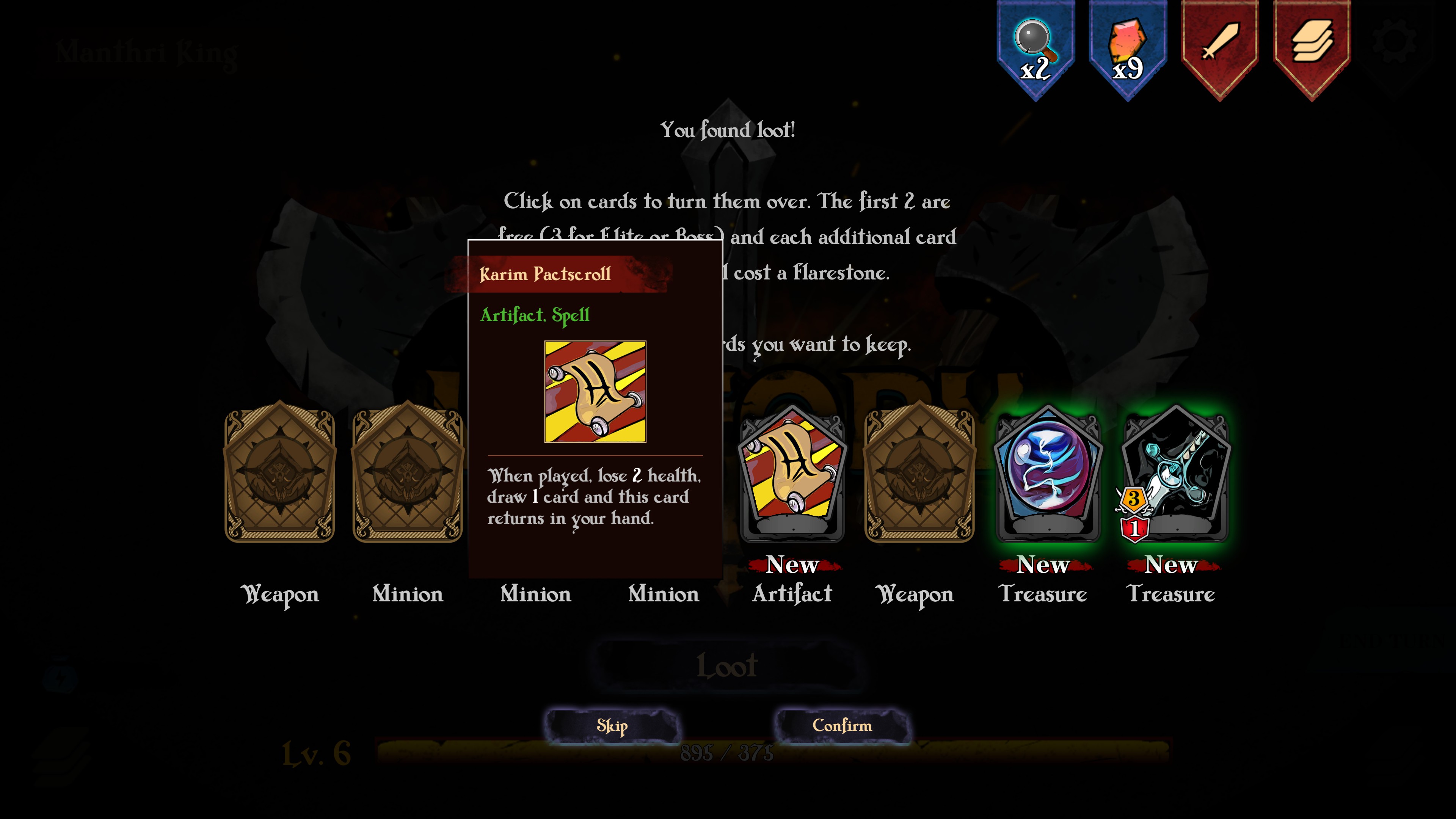
Each unit may also move one square and attack once, in any order, though of course there are card effects and abilities that can alter these base actions as well. How well you make use of the ability to change up the ordering of moves and attacks will make a huge impact on how well you perform in some of the harder battles; I’m embarrassed by the number of times I realised that a damaging battle would have gone much better for me if I’d moved a certain unit after attacking instead of before.
Battles can be hard and often seem unbalanced, with your deck make up and random card draw often being the determining factors between success or failure — and often unpredictable before entering combat. The Rogue-like permadeath nature of the game makes this imbalance feel a little harsh sometimes, requiring you to chalk up your failure as a learning experience, and try to prepare better next time. Of course, given the heavy RNG influence, this isn’t always possible.
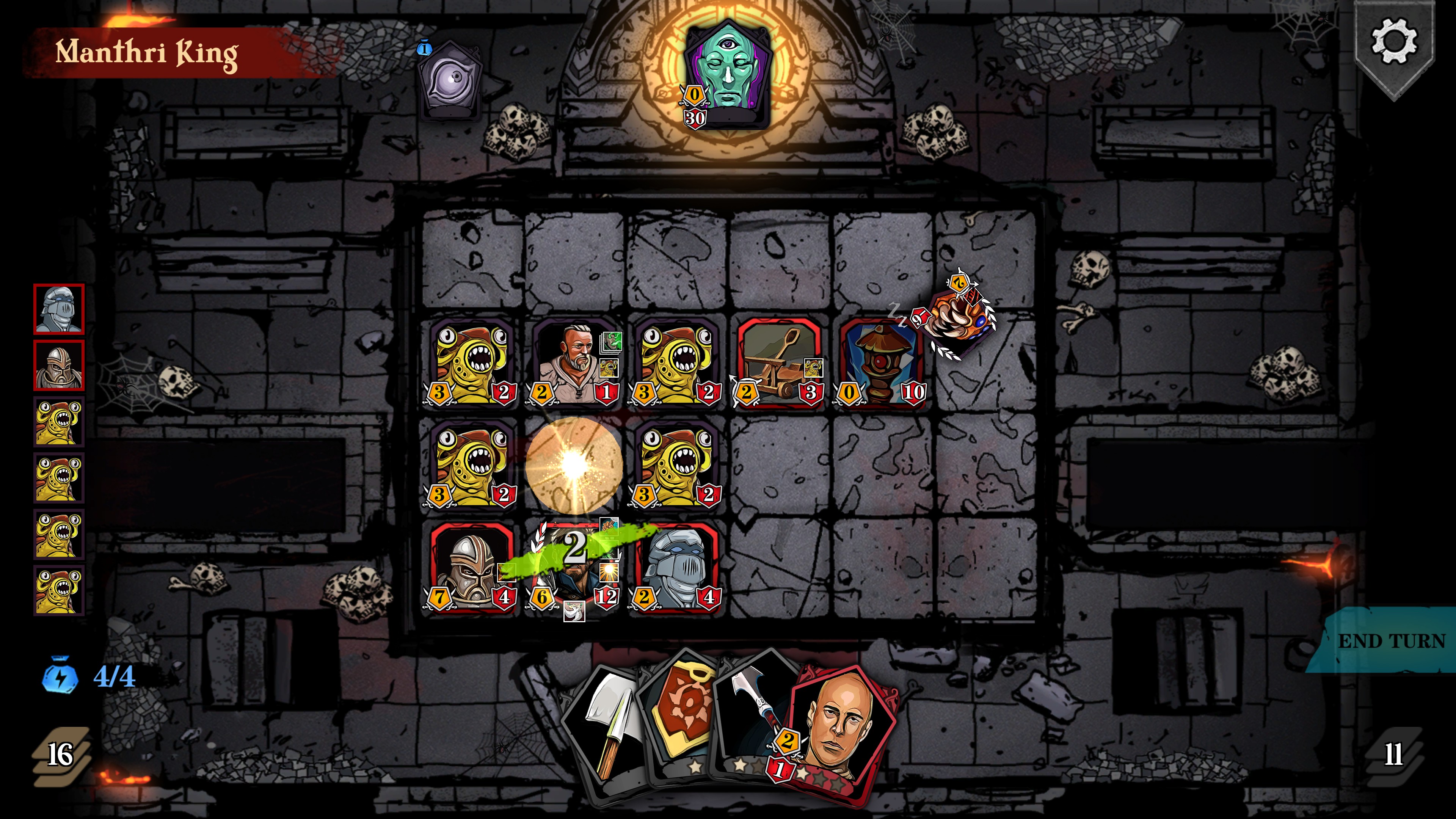
Progression and Meta-Progression
Progression types in DungeonTop are fairly typical for the genre.
Within a run you will encounter opportunities to improve your deck through the addition of cards not available in the starting decks, removal of cards you no longer want or need, and also the ability to upgrade your existing cards. The range of cards available in the dungeon adds to the starting decks to dramatically increase the number of cards and abilities available. I found the upgrades a little disappointing, however, as, with the exception of only a small handful of cards, upgraded versions are simple incremental improvements of power or hp over the base cards; I had been hoping for new or improved abilities as well.
Your hero also has the opportunity to improve within a run, with each creature defeated in battle providing experience points to your hero. Earn enough experience points and you’ll advance a level, unlocking a talent. These can be game changers, including extra hitpoints, healing, movement, and most importantly, mana. Talents are laid out in three rows, with a number of tiers in each. The more powerful higher tiers for each row can only be selected if all lower tier abilities in that row have already been unlocked, so it’s worth reading the tooltip for each of the high-tier talents before deciding on your desired row. Unfortunately, these are always the same for each run; there’s no pseudo-randomness involved, making the character progression for each run feeling pretty static and repetitive.
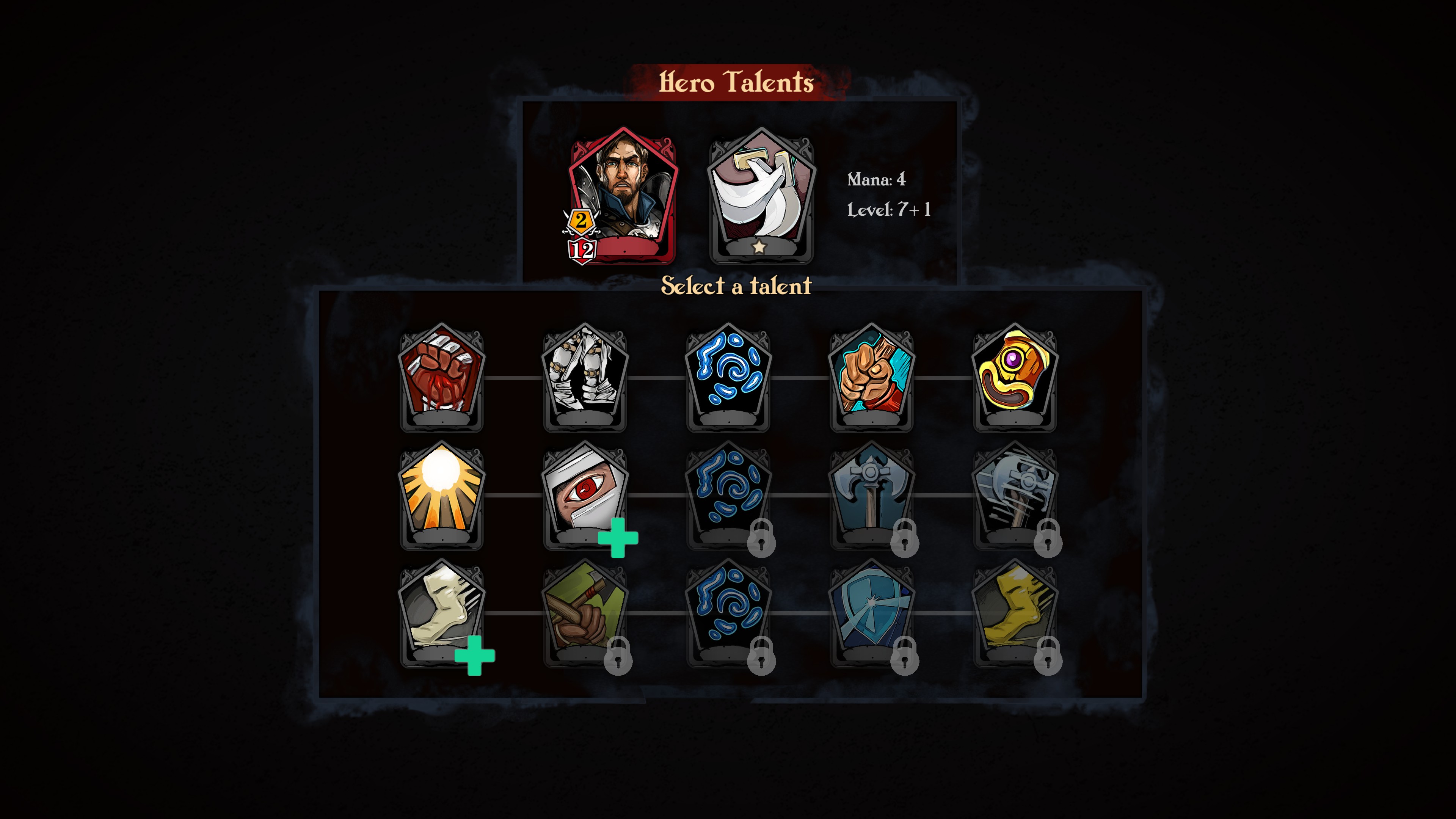
Progression between runs involves unlocking new hero types (only one extra in the current version) and allegiances (none currently available), as well as new cards that may be found within the dungeon. This sort of progression is achieved through the collection of treasure, which is converted to gold on a successful run and subsequent escape from the dungeon. Even a losing run can provide some benefit, however, as 25% of the collected treasure value is available in this case.
There’s no way to improve heroes, cards, or equipment between runs, unfortunately.
Look and Feel
The game manages to feel a lot like a board game, with the tile-based map easily seeming like something you’d unpack from a box and set up yourself in response to some sort of dice roll as you play, and the rectangular battlemaps in only a handful of different sizes also fitting the board game aesthetic to a tee. Initially, the number of cards feels small and restrictive, but as you play more of the game you’ll realise that that’s only the starting decks; there actually seems to be a reasonable number of different cards available to find as you play, and a variety of similar, but not identical, enemies, each with slightly different cards and abilities.
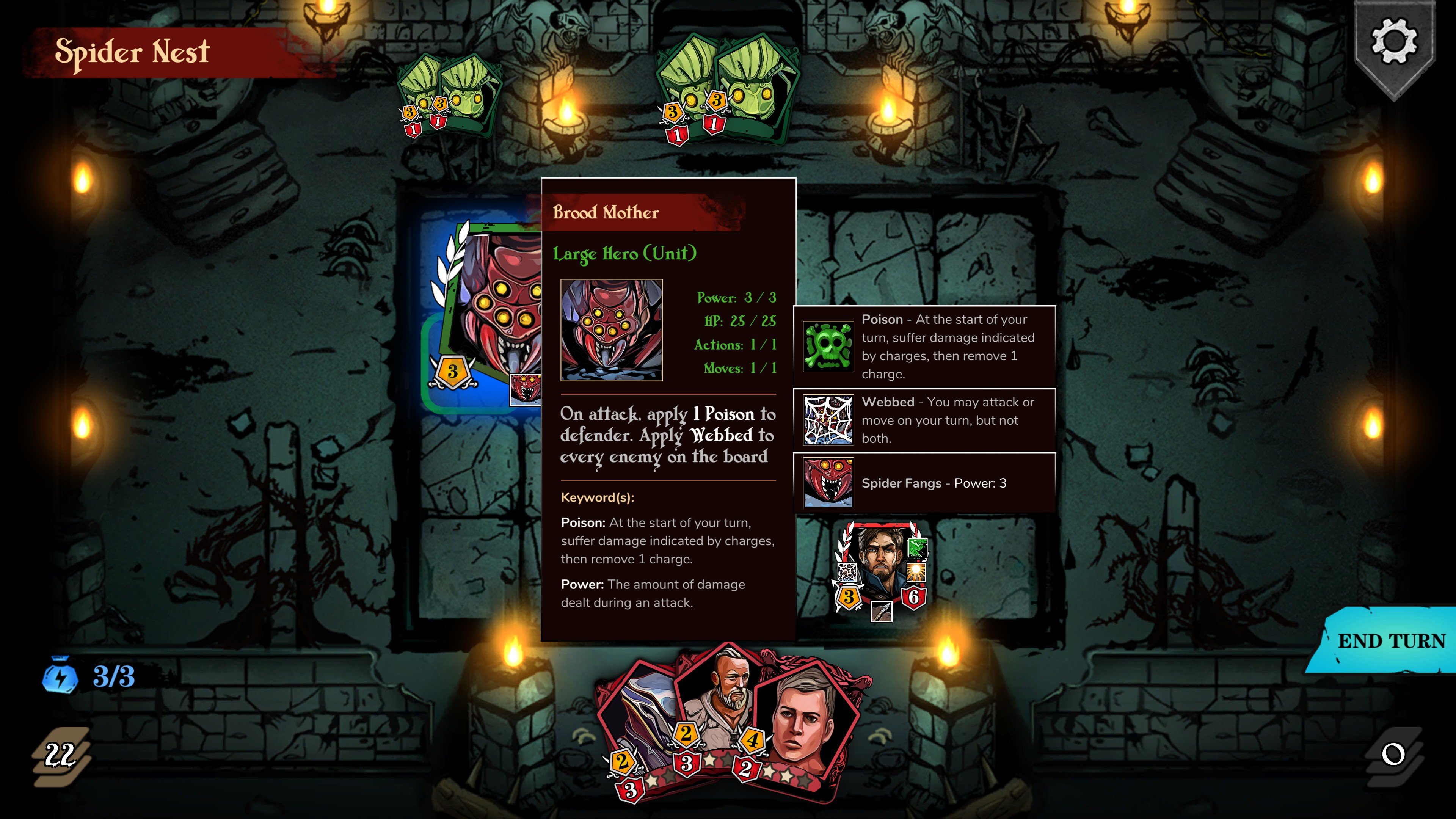
Given the card and portrait style of character employed by the developers, the game’s graphics are necessarily somewhat limited in scope. Everything is very well drawn, however, with most cards being easily distinguished from the others. Animations are well done, within the limitations of the card-based aesthetic, and special effects are relatively understated, but sufficient. The title screen is a little ugly, though.
In-game music is quite creepy and fits the game very well. Sound effects are fine for the most part, but I found the “tok, tok, tok, click!” sounds of the UI components a little loud and obnoxious. There’s no voice acting, but it’s really not needed either. It’s a bit of a shame the grammar isn’t quite as good as I’d like, however, as I found it a bit distracting at times.
The user interface itself is very straightforward and easy to use, but the lack of any graphics options was ever so slightly off-putting. Resolution, full-screen / windowed mode, and a single standard Unity graphics quality setting — from Very Low to Ultra — are the only graphical options, with vsync being entirely missing from the interface. That said, the game didn’t seem to set my graphics card into meltdown, so it’s probably fine.
Penultimate Thoughts
There were a few other things I wanted to mention that didn’t really fit anywhere else. First, the game has a goodly number of Steam achievements that propose some genuinely fun and challenging goals. I honestly don’t ever expect to achieve some of them — Slim and Trim or Space Control, for example — but I also never expected to get True Power and Titanic Strength at all, let alone within a minute of each other, so anything’s possible I suppose. The point is, especially once all of the heroes, allegiances, and cards are available in the final release, these could add enormously to replay value for achievement hunters.
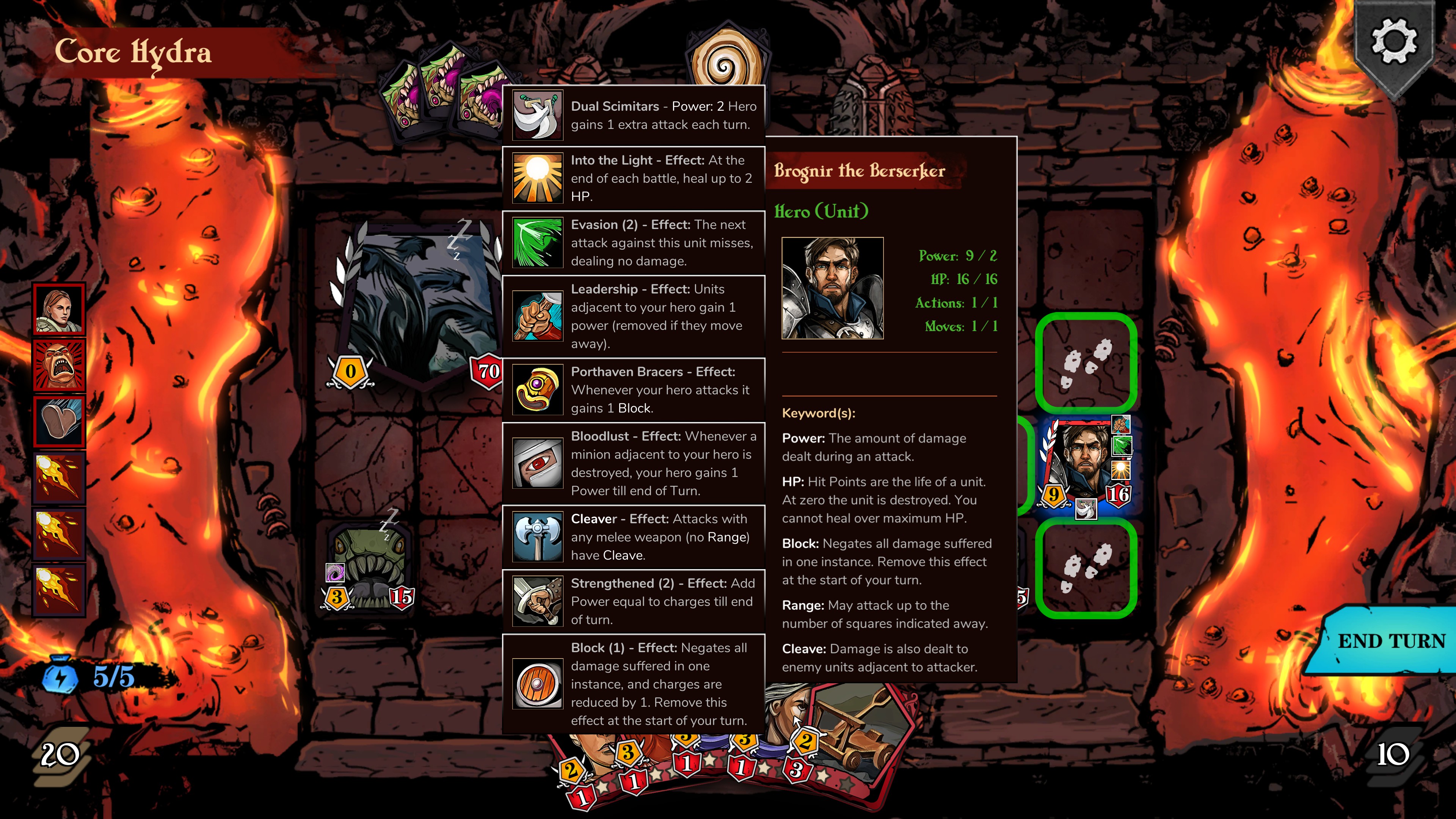
I found the loot and “flarestone” mechanics quite confusing at first, but quickly gelled to what they were doing, and I think they work rather well. The trade-off between immediate possible improvement, by revealing all loot available, and long-term progression, by saving up your flarestones for gold, is a good one, though I can see it would disappear entirely once you’ve played enough to unlock everything and no longer need gold.
Some of the game’s tactics are much deeper than they seem at first, too. I’ve already alluded to the importance of the free choice between order of move and attack for all of your units, both individually and as a group, but that’s just one aspect. You can win every fight by taking out only the enemy hero, at which point all of its minions disappear, but this almost invariably leads to an offensive battle in which your hero takes some damage. Since healing is fairly rare, this is another double-edged sword. For the first couple of hours I was finding DungeonTop to be a bit of a chore. I don’t know if I was just very bad at it or if the RNG was torturing me, but the first boss seemed unbeatable, and most of the time his cronies would take me out long before getting to him anyway. But then something either just clicked with me or the RNG had mercy on me at last, and the next few hours were more fun. The memory of those first couple of hours still sits with me, though.
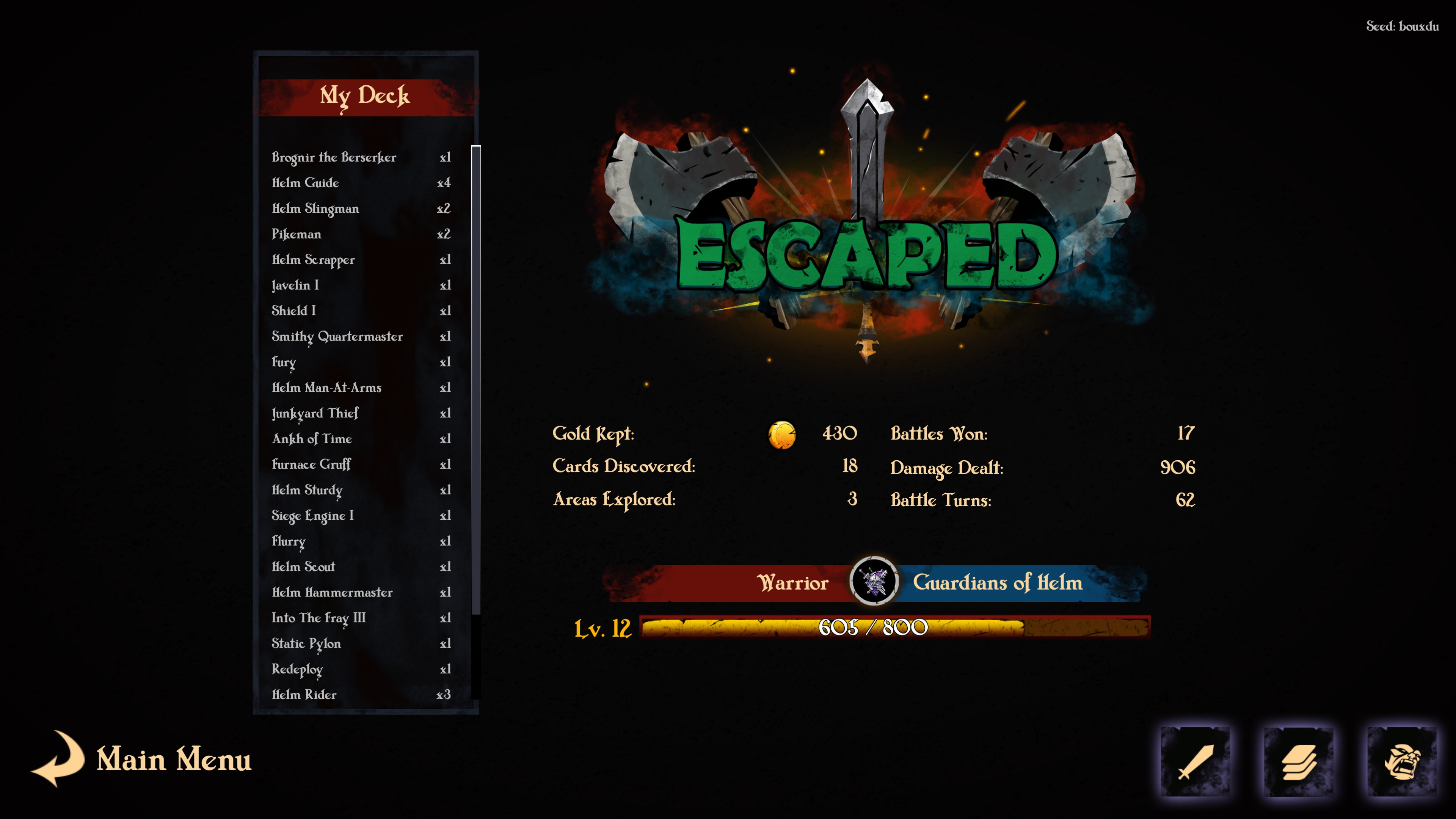
Verdict
If Spellsword Cards: DungeonTop were half its current asking price then this would be a definite recommendation: go and buy the thing and don’t worry about what happens during its journey through Early Access; there’s enough content here already to warrant the purchase. But at its current asking price and level of content, it’s a bit more of an iffy proposition.
The developers have already released two other games in this series on Steam, though, so they obviously know what they’re doing, and it is rather fun even with its current limitations, so if you’re a fan of deck builders and the miniature-board-game style appeals to you, then you may as well pick it up anyway. I’m happy I completed it once and unlocked a second character, but I don’t think there’s enough here yet to prompt me to attempt all of those tricky achievements. It has a good flow to it most of the time, and the battle tactics are much deeper than they appear at first glance; with more content and a few more balance tweaks it should manage to hit that “just one more try” addictive note.

